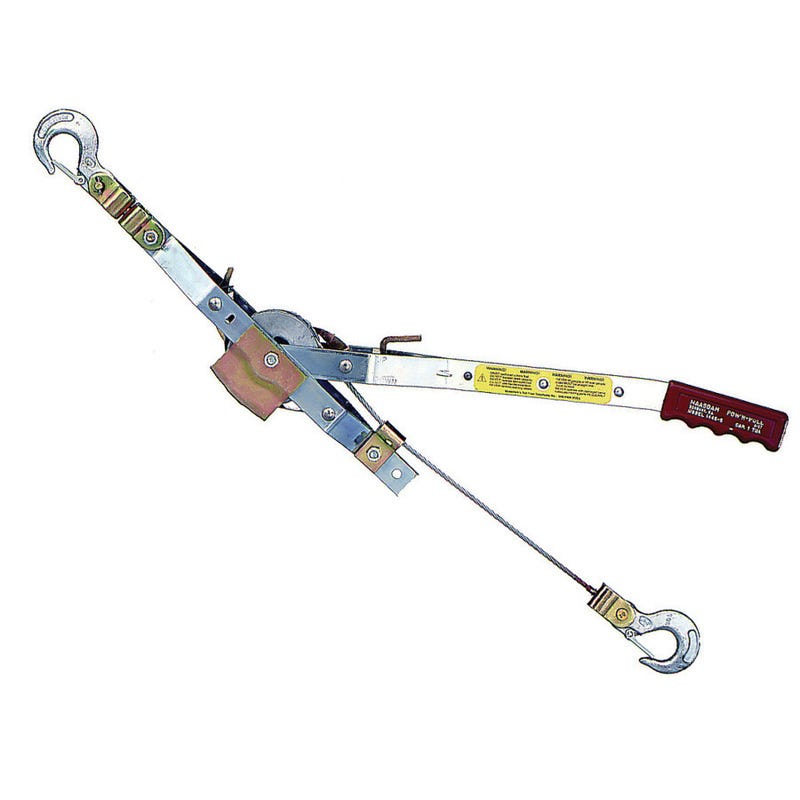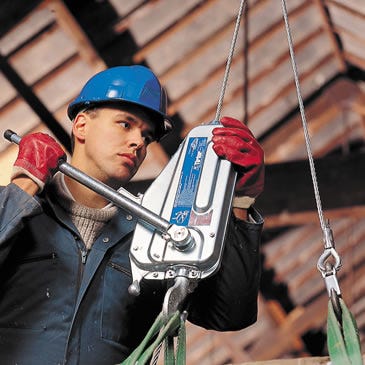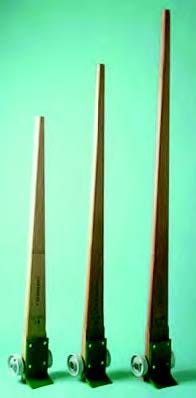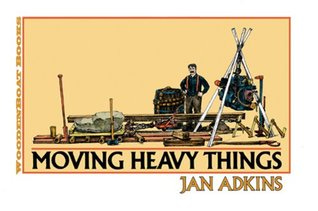Moving Heavy Stuff
Tools for Possibilities: issue no. 20

Best come-along
Come-alongs are a must-have for country living. They’re most often used to tug vehicles out of ditches and unsuccessful stream fordings, and to tighten fencing. I’ve also used mine for erecting and tightening large tents and canopies, pulling objects into and onto trucks, hoisting 350 lb carcasses for butchering, encouraging crunched automobile bodies back into proper shape, pulling stumps, straightening sagging barns back to verticality, moving large logs, turning trailers to face another direction, erecting pre-assembled 2×4 wall sections built on the floor, cinching loads onto flatbed trucks, dragging heavy boats up the ramp onto the dock or onto their trailers, erecting wind generators, extracting and installing engines in vehicles and boats. In other words, moving just about anything up to 2 tons. Come-alongs should not be used to move people, since a well-used cable can snap.
The Maasdam Pow’r Pull is the best (though not the cheapest) come-along you can buy. It is built better than knock-off copies — especially the $19.95 ones — in every way. There’s an accessory wire gripper that enables the Maasdam (or any other pull tool) to tighten fences, clotheslines etc. I’ve beat the hell out of my 1969-model, and it has never failed. It will pull 2 tons. You can buy very expensive aluminum giant come-alongs from several firms, but the fine print with them sez that they are also 2-ton, so I don’t see much point in them except they are beautiful and classy-looking. Any tool that carries a high loading should be of the very best quality, as failure can be deadly or at the least scary. The Maasdam is good stuff.
Hints for working with a come-along: Many folks loop a come-along’s cable hook around an object and then hook it back onto the cable like a noose. This is very unsafe, as the hook will either cut or seriously damage the cable. Users should invest in a couple of suitable “Shackles” (any hardware or boat store) for such duty, and never hook anything directly to a come-along’s cable. Hint for comealong use where there are no trees or objects to anchor it to: Bury your spare tire a couple feet down and hook to that. Come-alongs also need some sort of anchor for the mechanism. I keep a length of 3/8ths chain for that purpose. — J. Baldwin

Better than a come-along or winch
Tirfor Griphoist® Wire Rope Hoist
I don’t know anything else non-explosive, that you can pick up with one hand, and that can move five tons one hundred feet — with safety, precision, and astonishingly little work. Like many good tools the Tirfor is a thing of beauty, superbly designed and engineered. With 100 feet of cable (or more) its reach is much greater than a come-along, and this can often make all the difference. Its speed is much faster, too, not just the speed in moving something (the lever is double-acting) but speed in setting up or moving the set-up around. Often when you need to move something, minutes if not seconds count. The action is precise. A come-along winds the cable upon itself, and often when the cable comes under tension the cable wrap slips a bit. The resulting jerks can cause all kinds of problems in a situation where precise movement counts, and a sudden shift in load may cause failure somewhere else. Finally, the Tirfor has a much more effective (and safer) mechanism for smoothly *lowering* a heavy load. Most (ratcheted) come-alongs are very poor at this. — George Dyson
In Europe these tools are known as Tirfor Hand Winches. In the US they are branded Griphoists. They do the work of motorized winches — haul logs, or move stuck tractors, raise towers, and so on — but with the deftness of a human hand. Because there is no ratchet or coil, a Griphoist permits very small adjustments, unlike either come-alongs or winches. The patented double grip mechanism of the Griphoist/Tirfor is considered so reliable that some versions of the unit are rated by the UL to be suitable for hoisting humans — for instance in hoisting window-washers scaffolding. They come in models rated from 1500 pounds up to 8 tons. — KK

How to move five tons
Johnson Bar, or Pry Truck, gilmorekramer.com
I have always had a penchant for large, heavy objects, and therefore long ago started to pay close attention to how to move things which had weights far past the threshold of “mere human” move-ability. Palette jacks are the first and foremost tool for moving such things, but there are serious limitations with palette jacks in close quarters, or just getting a heavy load raised to the point where you can put a palette under it.
The “Johnson bar” (also known as pry truck, pry bar, mule, or wheeled steel lever) is a tool that solves those problems, and it has a host of other uses which you will discover. The pry truck is a miracle of simplicity and unbelievable strength. Moving a 1500-pound (680kg) lathe is child’s play with one of these levers, and I have moved multi-ton steel shipping containers (empty) with them. With two levers (and two people) almost any large object can be shifted and moved into position or onto more convenient conveyance (dollies, casters, or just onto steel pipe rollers.) Given two people, some time, and some shims, one can get large objects raised off the floor enough to slide a palette under with a palette jack or dollies. While it seems like this should remain in the realm of “industrial moving”, I’ve found that I use it almost once a week for other odd jobs around the house, like levelling a shed, moving a palette of floor tiles in the basement, etc.
Unlike a floor jack that needs clearance, this can be put under things with only ~1/4″ (~64mm) of gap between the floor and the object. It takes a few minutes of experimentation, but one can learn very quickly how to move objects by levering them off the floor and then rotating the handle around it’s axis to make objects move 4-6 inches (10cm-15cm) at a time.
Every time I use this tool, I wonder how I would have ever been able to do any moving and transport task without it and I can’t imagine not having one handy. Apologies to Archimedes: Give me a big enough lever on wheels and a place to stand, and I shall move the world.
There are several varieties and sources to purchase them. I have always used the woodhandled variety, however I can’t imagine there’s much of a difference between various models other than capacity. They’re somewhat expensive, but I’ve never seen one on the “used” market — I suspect once people have such a useful item, they only part with them during estate sales. — John Todd
How to …
Moving Heavy Things, Jan Adkins 2004, 48 pages

Sooner or later, most people need to move something too heavy to lift or too awkward to handle. This little book presents the basic physics, tactics, and best moves. Lift that piano without fear of hernia. Get your truck out of the ditch without calling for help. Stand that 500 lb. 55-gallon drum up on end with a flick of the wrist. Here are the tools, knots, and safety precautions you’ll need. The formulas and tables for calculating the capacities of ropes, chains and cables are here, too, all described in the proper lingo (e.g. “swigging” and “parbuckling “ – very useful moves) and illustrated with the author’s classy drawings. Long out of print, and really missed, this classic book is now available again. — J. Baldwin
- Precept Two: The Geezer Ploy When the old fellows didn’t have diesel cranes to pull their fat out of the fire, they were obliged to be fiendishly clever. Ask yourselfhow they would have set up for your problem in 1900, in 1800, 1700, and so forth.
- Precept Five: Applied Sloth As stated in the stagehand’s axiom: “Never lift what you can drag, never drag what you can roll, never roll what you can leave.” Creativity germinates in indolence, and the cleverest people are often the laziest: they are always looking for an easier way. The easiest way is often the simplest, most direct, and the best way.






